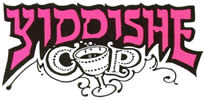HARVEY PEKAR WASN’T THAT FUNNY
Harvey Pekar wasn’t that funny in real life. He was a campeón del mundo bitch-moaner. He would drey you with pedantic lectures on, say, an avant-garde jazz musician or a neglected writer such as George Gissing. Harvey threw in gobs of “you know’s,” connectors that allowed him to talk for a half-hour nonstop and still retain membership in the Youse Guys Club. The lectures were always about Harvey, with the occasional aside about the neglected artist, who was also Harvey.
When Harvey edited his work for his comic books, he distilled a year’s worth of harangues and keen journalistic observation into a few thousand words. The comic book — the insights, the dead-on dialogue and the self-deprecating humor — was the opposite of his rambles.
Ray Dobbins (a.k.a. Jim Flannigan), the author of Don the Burp and Other Stories, was an ex-Clevelander in New York, who lived in the East Village near a Village Voice critic. Dobbins showed Harvey’s early comic books to critic Robert Christgau and his wife, Carola Dibbell, and she wrote up Harvey for the Voice, Dec. 31, 1979.
Onward.
Through the ensuing acclaim and fame, Harvey was, still, the Kinsman Road boy who unfortunately attended Shaker Heights High. That move — from proste Kinsman to fancy-schmancy Shaker of the 1950s — contributed mightily to Harvey’s me-against-the-world attitude. Read about it. It’s in his comic books.
At my first son’s bris in 1981, Harvey gravitated toward the mohel, an Orthodox rabbi.
Harvey told me he was going to write about the bris. Something about the mohel raising his arms and saying, “Golden hands!”
Pekar saw things others missed. And he got it down on paper.
—-
[“Drey” is turn/pester. “Proste” is common/boorish.]
[More on Harvey at “Where is My Harvey Pekar Bobblehead?”, a Klezmer Guy post from 2/3/10.]
—
2 of 2 posts for 7/14/10
—
See “Driving Mr. Klezmer” 7 p.m. Thurs., July 29, at Cain Park, Alma Theater, Cleveland Heights. $20 in advance. $23 at the door. Call 216-371-3000 or visit www.cainpark.com.
“Driving Mr. Klezmer” is a clutch-popping trip through the states of klezmer, pop, Tin Pan Alley and spoken word. The ride: a Ford Tsuris.
The show is a nudnik/beatnik mash-up of music and comedy. Bert Stratton is on clarinet and spoken word (i.e., this blog). Alan Douglass, the chauffeur, is on vocals and keyboards.
—

4 comments
Who was the first to write about “American Splendor” in Cleveland? I reviewed #5 for the Cleveland Edition in 1980 — but that must have been way after other write-ups, no?
To Mark Schilling:
I’m pretty sure your review was the first in Cleveland. Pekar began self-publishing in 1976. Took a long time to get the PR mojo going.
The Village Voice article was a wake-up call to Cleveland media. The deal in Cleveland (and probably everywhere else between the coasts) back then was: Don’t treat any local art seriously until NYC says it’s good.
Not a bad filter. Not good, either.
I’m going to find your Japan Times Pekar interview — one of the best Pekar interviews — and put it here: http://search.japantimes.co.jp/member/member.html?ff20040707a5.htm
Here’s the Carola Dibbell article about Harvey for the Village Voice, Dec. 31, 1979.
http://www.robertchristgau.com/u/cd/bkrev/pekar-79.php
I dug up the Pekar review in the Oct. 7, 1980 Cleveland Express.
Choice quotes:
“What happens when a writer for the comics turns serious? Not serious like Mary Worth, but serious like Dreiser, like Sherwood Anderson? What happens, in other words, when he tries to make art from some very ordinary lives?”
“The man has a talent for the pathos of the ordinary, the strangeness of the everyday. He preserves under glass those moments of revelation that most of us only notice out of the corner of an eye…He is an original.”
Leave a Comment